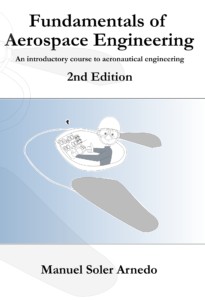Abstract
The overall goal of this dissertation is to develop multi-objective optimization techniques for computing low-thrust trajectories. The present work is motivated by the increasing number of space projects that will benefit from low-thrust propulsion technologies to gain unprecedented scientific, economic and social return. The low-cost design of such missions and the inclusion of concurrent engineering practices during the preliminary design phase demand advanced tools to explore as many options as possible and to assess them against multiple conflicting criteria. However, the determination of optimal low-thrust transfers is a challenging task and remains an active research field that seeks performance improvements. This thesis contributes to in- crease the efficiency of searching wide design spaces, reduce the amount of necessary human involvement, and enhance the capabilities to include complex operational constraints. To that end, the general low-thrust trajectory optimization problem is stated as a multi-objective Hybrid Optimal Control Problem. This formulation allows to simultaneously optimize discrete decision- making processes, discrete dynamics, and the continuous low-thrust steering law. Within this framework, a sequential two-step solution approach is devised for two different scenarios.
The first problem considers the optimization of low-thrust multi-gravity assist trajectories. The proposed solution procedure starts by assuming a planar shape-based model for the in- terplanetary trajectory. A multi-objective heuristic algorithm combined with a gradient-based solver optimize the parameters defining the shape of the trajectory, the number and sequence of the gravity assists, the departure and arrival dates, and the launch velocity. Thereafter, candi- date solutions are used as initial guesses for a direct collocation method. The problem is tran- scribed into a Nonlinear Programming Problem by discretization, considering three-dimensional dynamics and the optimal steering law. The sequence of planetary gravity assists is known and provided by the heuristic search. Operational constraints to comply with launch asymptote dec- lination limits and fixed reorientation times during the transfer apply. The presented approach is tested on a rendezvous mission to Ceres, on a flyby mission to Jupiter, and on a rendezvous mission to Pluto. Pareto-optimal solutions in terms of time of flight and propellant mass con- sumed (or alternatively delivered mass) are obtained. Results outperform those found in the literature in terms of optimality while showing the effectiveness of the proposed methodology to generate quick performance estimates
In the second case, the simultaneous optimization of fully electric, fully chemical and combined chemical-electric orbit raising transfers within the Earth environment is considered. In the first step of the solution approach, the control law of the electric engine is parameterized by a Lyapunov function. A heuristic search algorithm selects the optimal propulsion system among a user-provided list, the transfer type, the low-thrust control history, as well as the number, orientation, and magnitude of the chemical firings. Earth’s shadow, oblateness and Van-Allen radiation effects are included. In the second step, candidate solutions are deemed as initial guesses to solve the Nonlinear Programming Problem resulting from applying a direct collocation scheme. Operational constraints to avoid the GEO ring in combination to slew rate limits and slot phasing constraints are included. The proposed approach is applied to two transfer scenarios to GEO orbit. Pareto-optimal solutions trading off propellant mass, time of flight and solar-cell degradation are obtained. It is identified that the application of operational restrictions causes minor penalties in the objective function. Additionally, the analysis highlights the benefits that combined chemical-electric platforms may provide for future GEO satellites.





